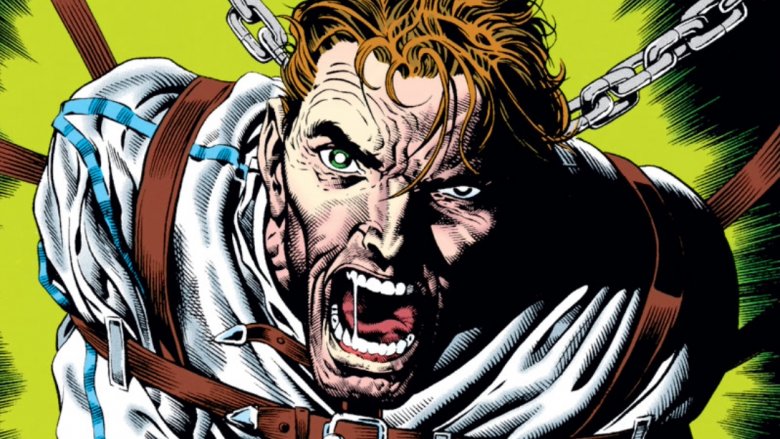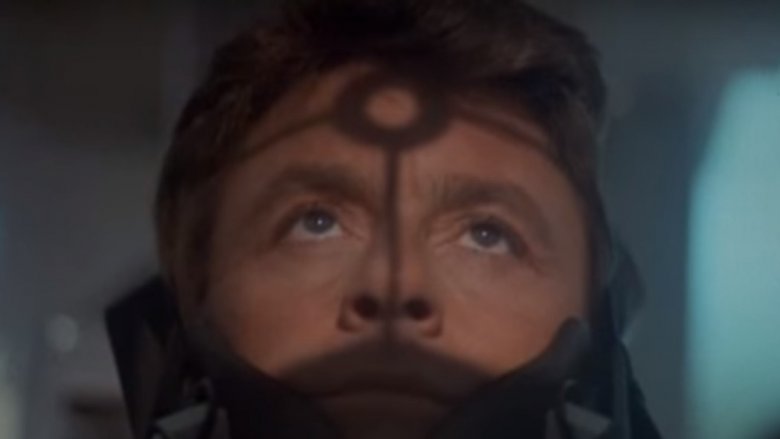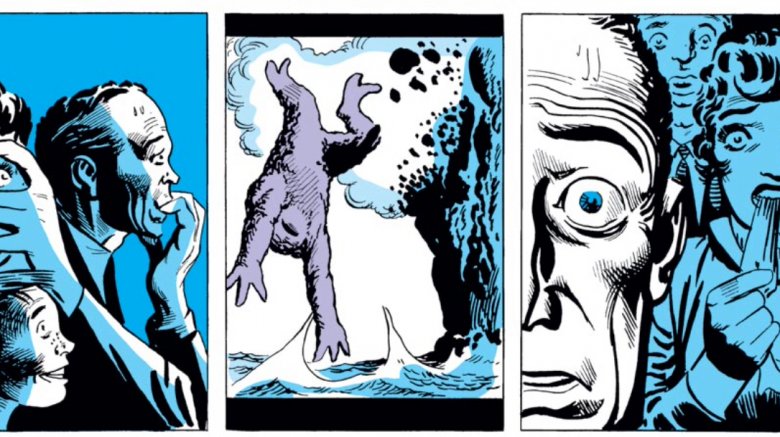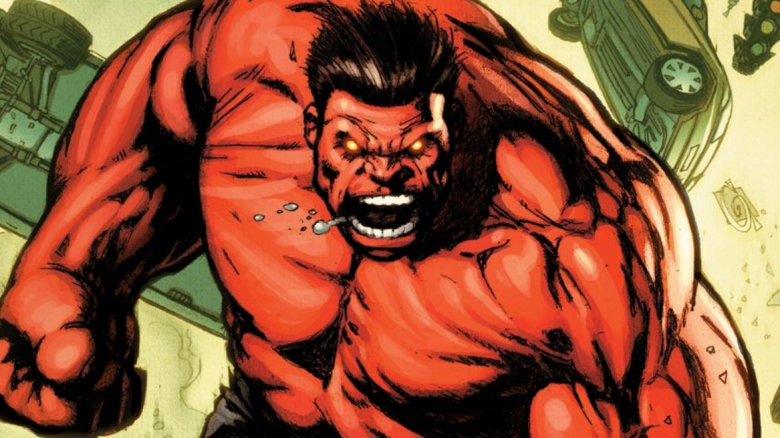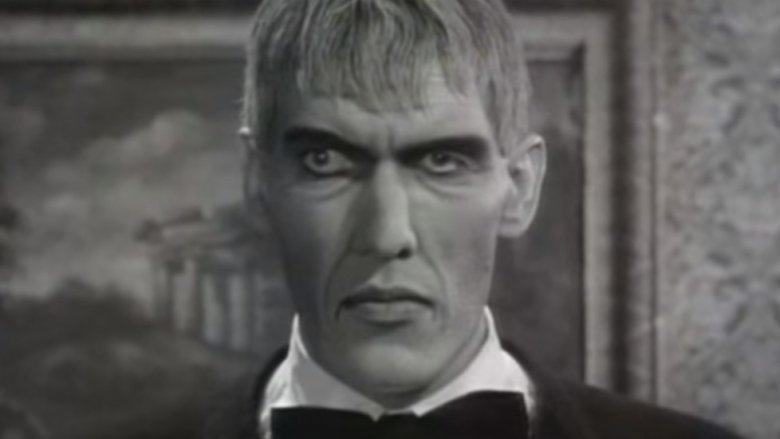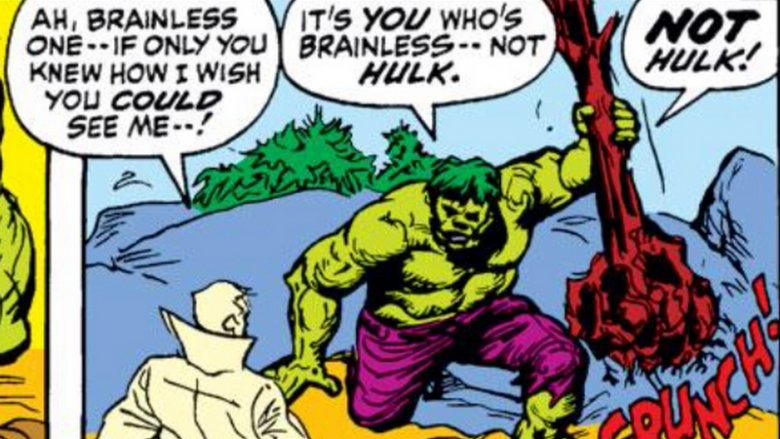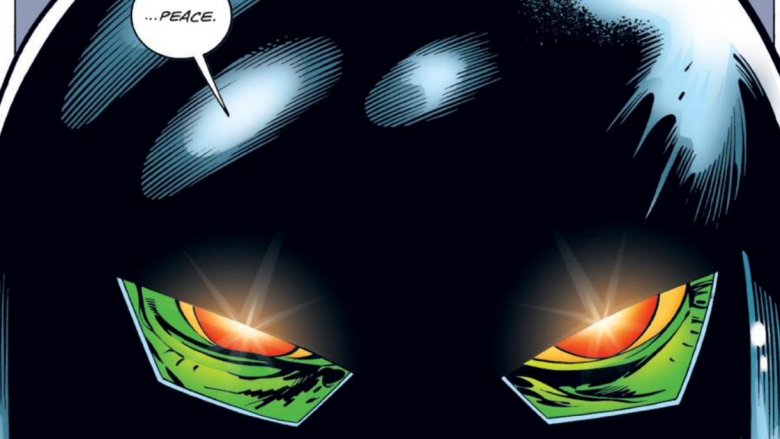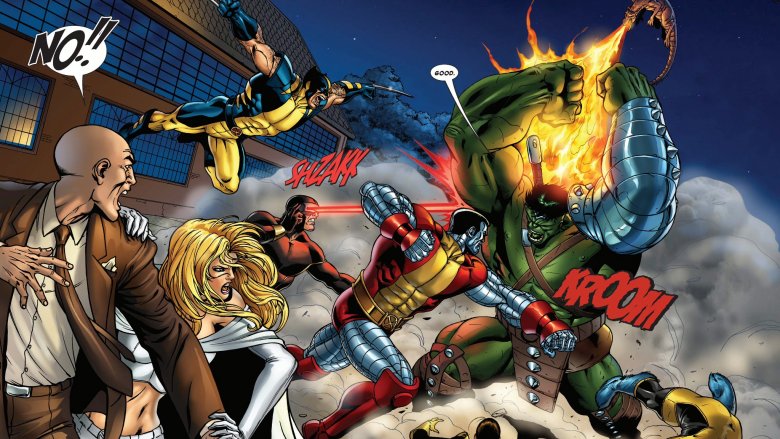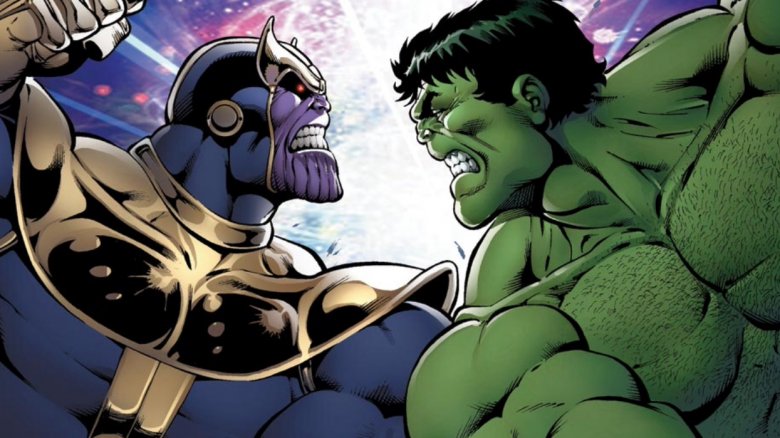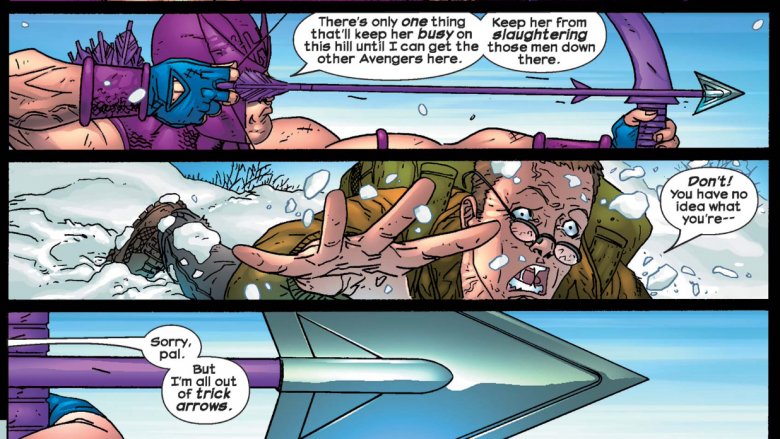The Untold Truth Of The Incredible Hulk
The Incredible Hulk is one of Marvel's oldest and most recognizable icons. Created by comics legends Stan Lee and Jack Kirby and first appearing in 1962's Incredible Hulk #1, the Green (and sometimes gray or red) Goliath spawned hundreds of comics, two live-action motion pictures, a popular live-action TV show along with three accompanying TV movies, four animated series, prose novels, animated films, video games, toys, collectibles, big foam hands that make smashy sounds when you hit something with them, and more "who would win: Hulk or _______" online debates than you would ever want to count.
With that many reproductions and adaptations come stories: not just stories the authors wrote, but the stories they wanted to tell that never happened, and the stories that happened outside the panels of what it took to bring the character to life. With so much Hulk over so much media, it seems impossible to know all of the stories, even to the most hardcore fans.
Here's the untold truth of the Incredible Hulk.
Banner SMASH!
One of the strangest, most interesting, and hilarious periods of the Hulk's history was the reign of "Savage Banner" which turned the most well-known Banner/Hulk dichotomy on its head.
The Hulk/Banner relationship most people are used to is what you see in the MCU films and the '70s live-action show: Banner tries not to get mad, Banner inevitably gets mad, and Banner's anger makes him turn into a huge green guy who either seems utterly incapable of speech or talks only in the childlike pidgin English that made phrases like "Hulk Smash" and "Hulk is the strongest one there is" so famous. But In the comics, the Banner/Hulk dynamic has offered a lot more variety. We've had gray Hulks, red Hulks, smart Hulks, mobster Hulks, Hulks who never turned back into Bruce Banner, and Hulks whose transformation had nothing to do with anger, but — like a werewolf — was governed by the change from day to night (in fact, this was how the Banner/Hulk transformation worked way back in Incredible Hulk #1).
Toward the end of 1995's Incredible Hulk #425, longtime Hulk writer Peter David changed things up. After enjoying a few years of a relative peace with his warring personalities and remaining in the Hulk's body while retaining the intelligence of Bruce Banner, the Hulk transformed physically into Banner but mentally into the Hulk. In other words, while he was physically the Hulk he had the intelligence of the genius scientist Bruce Banner. But when he physically became Bruce Banner, he had the mind of the myopic and enraged Hulk.
For the first time in the history of the character, anger became the Hulk's greatest weakness. Previously, even after turning into the Hulk, the hero's strength would continue to increase as he got angry. Now he struggled to stay calm during fisticuffs with the likes of Thor and Man-Thing, otherwise turning into the vicious but utterly helpless (at least in the case of facing anybody more physically impressive than Howard the Duck) Bruce Banner.
Bruce vs. David vs. Bob
There are a lot of differences between the Incredible Hulk comic and the '70s live-action TV show. One of the first obvious differences is that the Hulk's more human half in the show is named David Banner rather than Bruce Banner.
There are conflicting stories about why the network chose David over Bruce. Lou Ferrigno told an interviewer CBS thought Bruce sounded too "gayish," and that it was the most "absurd, ridiculous" thing he'd ever heard. Co-creator Stan Lee said the same thing in a 2014 issue of the magazine Back Issue.
Kenneth Johnson, who developed the Incredible Hulk show, has a different story. He told IGN he changed the name because he didn't want the show to seem "comic book-y" and didn't like the traditional comic book habit of using alliteration when naming characters (e.g. Lois Lane, Peter Parker, Clark Kent, etc). Regardless of the reason, Johnson isn't the only one guilty of changing Bruce Banner's first name and he isn't the first. That honor goes to Stan Lee.
Lee was writing a lot of comics in the early and mid '60s and used alliterative names for his characters, in part, to help him remember all the names. Unfortunately, in the case of the Hulk, this led him to mistakenly referring to Bruce Banner as "Bob" Banner. His solution, announced in a 1964 Fantastic Four comic, was that the real full name of the Hulk's more human alter-ego was Doctor Robert Bruce Banner.
Will the real Hulk please stand up?
Believe it or not, the Incredible Hulk was not Marvel's first Hulk. In fact, it seems to be a name they had some fondness for.
In 1960's Strange Tales #75 came the story "I Made the Hulk Live," about a giant robot named the Hulk.
Later that year came Journey Into Mystery #62 which featured Xemnu the Living Hulk – a furry alien with mind control powers. The cover of the comic announced "Here Comes...THE HULK!" Xemnu would later become a somewhat obscure supervillain in Marvel's superhero universe; his first battle against Marvel's heroes came in 1972's Marvel Feature #3, when he was renamed "Xemnu the Living Titan." The Defenders team he clashed with included the more well-known Hulk, who spoiled Xemnu's plans. The Hulk's more brutish mind made him impervious to Xemnu's mind control powers.
Finally, there was 1961's Tales to Astonish #21, which was the strangest of them all. The Hulk of "The Silent Screen" was a giant sea monster in a movie. The story fools you into thinking you're looking at an audience watching a movie called The Hulk. When the sea monster steps out of the movie screen to the audience's horror, you learn you're actually watching an audience that's watching a movie about people who are watching a movie when a sea monster steps out of the movie screen. And then — yep, you guessed it – because that isn't confusing enough, it's revealed you are watching an audience that is watching another audience who, in turn, watch still another audience that's all scared about the giant monster jumping out of the screen.
The Red Hulk is older than you thought
In 2008, Hulk was relaunched with the creative team of Jeph Loeb and Ed McGuinness. The pair introduced the world to the Red Hulk – a malevolent, intelligent, and vicious red-skinned version of the Hulk who seemed like he might be even more powerful than the original. It took a couple of years, but in Hulk #23 it was revealed the Red Hulk was General Thaddeus "Thunderbolt" Ross, the same army general who'd hounded the original Hulk for years. The Red Hulk would eventually have his own series largely free from the original Hulk, and even his daughter Betty Ross — a.k.a Red She-Hulk — briefly enjoyed her own title.
Believe it or not, Loeb wasn't the first writer to think of a red Hulk. Kenneth Johnson, who developed the '70s Incredible Hulk show, was confused at Marvel's choice to color the Hulk green and felt red made more sense since it was the color most naturally associated with anger. But Stan Lee was adamant that the green Hulk was too iconic an image to be changed.
The many voices of the Hulk
Ironically, while Lou Ferrigno has often voiced the Hulk — he was the Hulk voice actor for the '90s Incredible Hulk cartoon as well in every Marvel Studios film featuring the Hulk before Thor: Ragnarok — he wasn't the Hulk's voice in the Incredible Hulk TV show that was so important to his career.
The source of the '70s Incredible Hulk's grunts and growls was Ted Cassidy, best known as Lurch from The Addams Family. Cassidy also read the narration that told the story of David Banner in the beginning of each episode. After Cassidy's death in 1979, Charles Napier replaced the voice actor on Incredible Hulk.
The '90s Incredible Hulk animated series also featured some interesting choices for voice actors. Along with Ferrigno on Hulk, Mark Hamill voiced The Gargoyle, Luke Perry of Beverly Hills 90210 fame voiced Hulk sidekick Rick Jones, and supermodel Kathy Ireland voiced the villainous Ogress.
The Hulk's Third Eye
You might think the Hulk's abilities are limited to the physical, but you'd be wrong. Throughout his comics, the Hulk has shown some strange perceptive abilities that border on the psychic.
For example, the Hulk can see ghosts and spirits invisible to others. During one of the Hulk's first encounters with Doctor Strange in Marvel Feature #1, Strange learned the Hulk could somehow see and interact with Strange's astral form. Peter David later made use of this ability, hounding the Hulk with ghosts both literal and metaphorical during his run on Incredible Hulk.
The Hulk has always instinctively known how to return to the gamma bomb site where he was created. In later years, this was explained as being a kind of psychic energy summons from the not-quite-dead Maestro — a future version of the Hulk who was defeated by being teleported back in time to the gamma bomb blast. But this doesn't explain the Hulk's other geographic instincts, such as in Incredible Hulk #33 when the Hulk is able to leap from the coast of Wakanda and instinctively know how to angle his jump in order to land on a tiny atoll in the middle of the ocean just barely big enough for the landing.
There's also the matter of the Sentry. In the Sentry limited series that introduced the mentally unstable superhero, almost none of Marvel's other superheroes could remember Sentry. Only the Hulk remembered Sentry for unexplained reasons, welcoming him with a happy "Golden Man!"
War Hulk
Beyond his ongoing rivalry with Wolverine, the Hulk doesn't have a lot of connections with the X-Men. So it would likely surprise even Wolverine to know that the Hulk was briefly the herald of one of their most powerful adversaries: Apocalypse.
In Incredible Hulk #456, following a tussle between the Hulk and the X-Men, Apocalypse captured the Hulk and transformed him into one of his Four Horsemen — the Horseman of War, making the Hulk the first non-mutant character to be a Horseman of Apocalypse. The Hulk initially resisted the villain's machinations, but visions of the ghost of Bruce Banner's dead father helped push him over the edge.
Apocalypse's transformation included cybernetic implants in the Hulk's brain, a powerful sword, and a retractable metal whip. The Hulk's added power allowed him, in the following issue, to easily dispatch with the twin threats of Juggernaut and the Absorbing Man — either of which would be a match for the Hulk on his own.
Apocalypse's hold broke after the Hulk injured his longtime friend Rick Jones towards the end of Incredible Hulk #457 (Jones would remain wheelchair-bound because of the injuries until the events of Avengers Forever). Realizing what he'd done, the Hulk ripped Apocalypse's implants out of his head, and fled the scene.
He destroyed the X-Men
World War Hulk: X-Men was not the first clash between the Hulk and Professor X's students. He first fought the original team in 1970's Uncanny X-Men #66, he was a key factor in the death of the X-Man Mimic, and his many battles with Wolverine are well-known. But when the Hulk fought the team in the three-issue series World War Hulk: X-Men — a companion series to the line-wide World War Hulk event — he fought one of the largest gatherings of X-Men imaginable, and he took them down. All of them.
While Professor X was a member of the Illuminati — a secret cabal of superheroes who were the Hulk's targets during World War Hulk — he was presumed dead when the group decided the exile the Hulk from Earth, and so had no part in the decision. Regardless, the Hulk traveled alone to Xavier's Westchester school to confront him with the question of what he would've voted if he'd been given the choice. The Hulk didn't like Professor X's answer, and rather than allow their mentor to be taken prisoner, the X-Men fought back. At first it was only the squad that starred in the Joss Whedon/John Cassaday run on Astonishing X-Men facing the Hulk, but soon all the active X-Men were facing the vengeful Hulk, including X-Factor and the Juggernaut.
The Hulk only relented after the young mutant Mercury showed him the graves of mutants who'd fallen, and the Hulk decided Xavier was in a hell of his own making and he didn't need to provide another one for him. But first, among other noteworthy injuries, the Hulk broke both of Colossus' arms and liquefied Wolverine's brain in his skull by punching him in the head over and over again.
The bane of Thanos?
There isn't much Thanos fears or, more to the point, there isn't much The Mad Titan admits to fearing. Still, the villain's narration from Thanos Quest implies he may fear the Hulk.
Thanos Quest was a two-issue miniseries that acted as prequel to Infinity Gauntlet – the series in which Thanos brought together all six infinity stones and literally wiped out half the living things in the universe with the snap of his fingers. Written and drawn by the villain's creator Jim Starlin, Quest showed Thanos retrieving — one by one — the Infinity Stones from their bearers.
At the time, most of the Stones were kept by members of a group called the Elders of the Universe; each member being the last surviving member of his respective species. To get the Power Stone, Thanos confronted the Elder called Champion. He noted that, like the Hulk, Champion's strength grew with his anger. As he noted this in his narration, he mentioned the Hulk, saying that a fight with the Hulk was something he'd been seeking to avoid for years.
To be fair, Thanos encountered the Hulk a number of times after Thanos Quest and never seemed particularly scared of him. Perhaps his easy victory over Champion made him less intimidated by the Green Goliath.
Still, the fact that he mentioned the Hulk in Thanos Quest at all is very telling if — for no other reason — than that up to that point, Thanos had succeeded in his efforts to duck the Hulk and had never encountered him. There was no reason for the Mad Titan to assume he would run into him, making the Hulk's reputation seem that much more impressive if a cosmic baddie like Thanos knew enough to steer clear.
Hawkeye's always been a jerk to the Hulk
The Hulk has quite a few rivalries going with other superheroes. His clashes with Thor are fan favorites, as are his many tussles with Fantastic Four's The Thing, and of course the X-Men's Wolverine.
It's unlikely anyone would consider Hawkeye a rival of the Hulk, even though it was Hawkeye who killed Bruce Banner in 2016's Civil War II #3. That makes sense. They're not rivals. And writers haven't made a lot of any particular antagonistic relationship between the two. Still, if you look at the narrative history, Hawkeye's always gone out of his way to be an absolute pain in the butt to the Hulk.
After Hawkeye rage-quit the Avengers, he came upon the Hulk battling the villain Zzzax in Incredible Hulk #166. Hawkeye was so determined to make a name for himself and show his former teammates what he was made of that he followed and pestered the Hulk all the way into the pages of Defenders #7. He annoyed the Hulk so much that the Defenders initially attacked Hawkeye, thinking he was a villain threatening the Hulk.
When Hawkeye took over the Thunderbolts — former criminals, like Hawkeye, seeking to redeem themselves — he needed a way to boost team morale. Once again, in 2000's Thunderbolts #34, he targeted the Hulk. The Thunderbolts did their best, by the Green Goliath got away.
Four years later, in Avengers #74, Hawkeye decided the best way to get his spot back in the Avengers was to draw blood from one of its founding members. When She-Hulk went on a rampage and Bruce Banner arrived to calm her down, Hawkeye decided the best way to keep She-Hulk occupied was to force Banner into Hulking out by shooting him through the shoulder.
Whether he had good reasons to shoot Banner in Civil War II or not, one thing is undeniable: Hawkeye's a freaking jerk.
